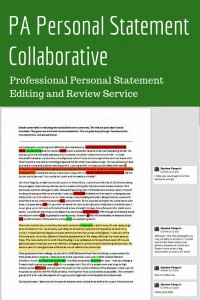Welcome to episode 1 of the FREE Audio PANCE and PANRE Physician Assistant Board Review Podcast.
The Audio PANCE and PANRE is an audio board review series that includes 10 Multiple Choice PANCE and PANRE Board Review Questions in each episode.
This is an excellent way to learn on the go!
Now you can study for your PANCE and PANRE, at they gym, in the car, on a run, or while relaxing on the beach.
This FREE series is limited to every other, you can download and enjoy the complete audio series by joining the PANCE and PANRE Exam Academy.
There are currently 13 episodes and over 160 minutes of audio content available for download from the academy homepage.
I will be releasing new episodes every two weeks. The Academy is currently discounted, so sign up now.
Listen Carefully Then Take The Quiz
If you cannot play the file using the player above it can be downloaded here. You can download and listen to past FREE episodes here, on iTunes, on Google Play Music or Stitcher Radio.
Podcast Episode 1 Questions and Answers
Which of the following factors in patients with chronic venous insufficiency predisposes them to the development of skin ulcers?
A. Increased intravascular oncotic pressure
B. Leakage of fibrinogen and growth factors into the interstitial space
C. Decreased capillary leakage
D. Inherited deficiency of protein C
A 26 year-old monogamous female presents with cyclic pelvic pain that has been increasing over the last 6 months. She complains of significant dysmenorrhea and dyspareunia. She uses condoms for birth control. On physical examination her uterus is retroverted and non-mobile, and she has a palpable adnexal mass on the left side. Her serum pregnancy test is negative. Which of the following is the most likely diagnosis?
A. Ovarian cancer
B. Endometriosis
C. Functional ovarian cyst
D. Pelvic inflammatory disease
At what age does the first tooth usually erupt in an infant?
A. 2-4 months
B. 6-8 months
C. 10-12 months
D. 14-16 months
A 7 year-old boy wets the bed on most nights. Which of the following is the preferred pharmacological agent to decrease the incidence of bed wetting episodes?
A. Imipramine (Tofranil)
B. Phenytoin (Dilantin)
C. Pramipexole (Mirapex)
D. Hyoscyamine (Urised)
A newborn is being evaluated for perioral cyanosis while feeding associated with sweating. Vital signs are rectal temperature, 37.8 degrees C (100 degrees F), blood pressure 80/45 mmHg, pulse 180/min, and respirations 40/min. A grade 3/6 harsh systolic ejection murmur with a single loud S2 is heard at the left upper sternal border. Electrocardiogram (ECG) shows right ventricular hypertrophy with right axis deviation. Chest x-ray shows a boot-shaped heart and decreased pulmonary vascular markings. Which of the following is the most likely diagnosis?
A. Atrial septal defect
B. Total anomalous pulmonary venous return
C. Coarctation of the aorta
D. Tetralogy of Fallot
Which of the following is considered to be the modality of choice for the identification of a pituitary macroadenoma that is suspected on the basis of a visual field deficit?
A. Skull x-ray
B. PET scan
C. CT of the brain
D. MRI of the brain
A 2 year-old male presents with a four day history of fever and general malaise. On examination the vitals reveal an oral temperature of 102 degrees F. The child appears to have rubor on the trunk which started one day prior to this visit. Physical examination reveals a maculopapular rash with defervescence. Which of the following is the most appropriate management at this time?
A. Ibuprofen (Motrin)
B. Aspirin
C. Amoxicillin
D. Valacyclovir (Valtrex)
A 42 year-old female experiences pain on the plantar surface of her left foot in the area of the third metatarsal head. The pain is associated with wearing tight shoes and is relieved by removing shoes. Examination reveals a palpable mass and reproduction of pain with deep palpation of the third intermetatarsal space. The patient has tried wearing wider shoes with metatarsal cushions and taking NSAIDS but her symptoms persist. What is the best therapeutic option at this point?
A. Casting of the involved foot
B. Physical therapy
C. Steroid injection
D. Surgical excision
Which of the following is the most likely to develop into a persistent cough in the adult patient?
A. Pertussis
B. Allergic rhinitis
C. Pharyngitis
D. Heart failure
A 30 year-old patient presents with weight loss, diarrhea, and steatorrhea. Labs reveal that the antiendomysial antibody (AEA) is positive. What is the most likely diagnosis?
A. Celiac sprue
B. Ulcerative colitis
C. Whipple's disease
D. Zollinger-Ellison syndrome
A patient sustained a 6 cm laceration on his anterior tibia that was primarily closed in the emergency department. What is the most appropriate time frame for removal of these sutures?
A. 1-2 days
B. 3-5 days
C. 6-8 days
D. 7-14 days
A hospitalized patient is found with confirmed pulseless ventricular tachycardia. IV access is obtained following the second shock given. Which of the following medications is to be administered immediately?
A. Amiodarone
B. Magnesium
C. Atropine
D. Epinephrine
A patient with advanced AIDS complicated by toxoplasmosis presents with altered mental status, recent onset of seizures, and focal neurologic deficits. Which of the following diagnostic studies is most helpful?
A. Toxoplasma gondii antibody titers
B. CT scan of the brain
C. Lumbar puncture
D. MRI of brain
This Podcast is also available on iTunes and Stitcher Radio for Android
- iTunes: The Audio PANCE AND PANRE Podcast iTunes
- Stitcher Radio: The Audio PANCE and PANRE Podcast Stitcher
Also, while you are over there, download Brian Wallaces' excellent Physician Assistant Exam Review Podcast. Follow along with Brian who covers new topics twice monthly and really does an amazing job!
Podcast: Download (7.0MB) | Embed
Subscribe: Email | RSS | PANCE and PANRE Podcast Player
View all posts in this series
- The Audio PANCE and PANRE Board Review Podcast Episode 1
- The Audio PANCE and PANRE Board Review Podcast Episode 3
- The Audio PANCE and PANRE Board Review Podcast Episode 5
- The Audio PANCE and PANRE Board Review Podcast Episode 7
- The Audio PANCE and PANRE Board Review Podcast Episode 9
- The Audio PANCE and PANRE Board Review Podcast Episode 11
- The Audio PANCE and PANRE Board Review Podcast Episode 13
- The Audio PANCE and PANRE Board Review Podcast Episode 15
- The Audio PANCE and PANRE Board Review Podcast Episode 17
- The Audio PANCE and PANRE Board Review Podcast Episode 19
- The Audio PANCE and PANRE Board Review Podcast Episode 21
- The Audio PANCE and PANRE Board Review Podcast Episode 23
- The Audio PANCE and PANRE Board Review Podcast Episode 25
- Cardiology 1: The Audio PANCE and PANRE Podcast Topic Specific Review Episode 27
- Pulmonology 1: The Audio PANCE and PANRE Podcast Topic Specific Review Episode 29
- Gastroenterology 1: The Audio PANCE and PANRE Podcast Topic Specific Review Episode 31
- EENT 1: The Audio PANCE and PANRE Board Review Podcast Topic Specific Review Episode 33
- Genitourinary 1: The Audio PANCE and PANRE Board Review Podcast Topic Specific Review Episode 35
- Musculoskeletal 1: The Audio PANCE and PANRE Board Review Podcast Topic Specific Review Episode 37
- Reproductive System 1: The Audio PANCE and PANRE Board Review Podcast Topic Specific Review Episode 39
- Episode 41: The Audio PANCE and PANRE Board Review Podcast
- Episode 43: The Audio PANCE and PANRE Board Review Podcast
- Murmur Madness: The Audio PANCE and PANRE Episode 45
- Episode 47: The Audio PANCE and PANRE Board Review Podcast – Comprehensive Audio Quiz
- Episode 49: The Audio PANCE and PANRE Board Review Podcast – Comprehensive Audio Quiz
- Episode 51: The Audio PANCE and PANRE Board Review Podcast – Comprehensive Audio Quiz
- Episode 53: General Surgery End of Rotation Exam – The Audio PANCE and PANRE Podcast
- Episode 55: The Audio PANCE and PANRE Board Review Podcast
- Episode 57: The Audio PANCE and PANRE Board Review Podcast
- Episode 59: Emergency Medicine EOR – The Audio PANCE and PANRE Board Review Podcast
- Episode 61: The Audio PANCE and PANRE Board Review Podcast
- Episode 63: The Audio PANCE and PANRE PA Board Review Podcast
- Podcast Episode 65: Hepatitis B Breakdown With Joe Gilboy PA-C
- Podcast Episode 67: Ten PANCE and PANRE Board Review Audio Questions
- Podcast Episode 69: Ten PANCE and PANRE Board Review Audio Questions
- Podcast Episode 71: Ten PANCE and PANRE Board Review Audio Questions
- Podcast Episode 73: Ten FREE PANCE and PANRE Audio Board Review Questions
- Podcast Episode 75: Ten FREE PANCE and PANRE Audio Board Review Questions
- Podcast Episode 77: The Audio PANCE and PANRE Board Review Podcast
- How to Study for Your PANCE: Podcast Episode 79
- Podcast Episode 81: Internal Medicine EOR Cardiology Questions
- How to Answer the Hardest PANCE and PANRE Test Questions: Podcast Episode 82
- How to Answer Tricky PANCE and PANRE Test Questions Part 2: Podcast Episode 83
- Cardiac Pharmacology Part One: The Audio PANCE and PANRE Episode 84
- Podcast Episode 85: Ten Mixed Multiple Choice Questions
- How to Be a Better PA Part 1: Nurses, Lab Techs, and X-Ray Technicians
- Podcast Episode 87: Ten Internal Medicine EOR Questions
- How to Be a Better PA Part 2: Medical Staff, Administrators, and Supervisors
- Podcast Episode 89: Ten PANCE, PANRE, and Rotation Review Questions
- Podcast Episode 90: Ten PANCE, PANRE, and Rotation Review Questions















Can you get in CD so you can listen in the car?
Hi Michelle, members of SMARTYPANCE and The Academy, have access to a members-only mp3 folder with all the past episodes. They can be downloaded and burned onto CD.
Stephen
Can you receive CME approved hours with the podcasts and questions?
Hi, Allison, you can claim category 2 CME (up to 50 hours) for self-study. So the answer is yes, this would qualify as category 2 CME.
– Stephen